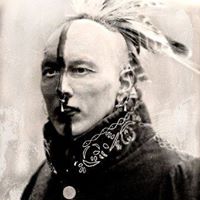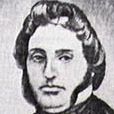John P Mccarty
age ~84
from Greeley, CO
- Also known as:
-
- John Paul Mccarty
- John P Mcarthy
- Phone and address:
-
5441 W 7Th Street Rd, Greeley, CO 80634
9703306845
John Mccarty Phones & Addresses
- 5441 W 7Th Street Rd, Greeley, CO 80634 • 9703306845
- Westminster, CO
- Atwood, KS
- Red Lodge, MT
- 2306 27Th Avenue Ct, Greeley, CO 80634
Work
-
Position:Handlers, Equipment Cleaners, Helpers, and Laborers Occupations
Education
-
Degree:Associate degree or higher
Ranks
-
Licence:Dist. of Columbia - Active
-
Date:1952
Lawyers & Attorneys

John Mccarty - Lawyer
view sourceOffice:
Kaman & Cusimano, LLC
Specialties:
Bankruptcy
Mechanics Liens
Landlord and Tenant
Collections
Real Property
Divorce & Separation
Estate Planning
Personal Injury
Mechanics Liens
Landlord and Tenant
Collections
Real Property
Divorce & Separation
Estate Planning
Personal Injury
ISLN:
919629163
Admitted:
2004
University:
Ohio Northern University, B.S.B.A., 2000
Law School:
Cleveland-Marshall College of Law, J.D., 2004

John E McCarty - Lawyer
view sourceLicenses:
Dist. of Columbia - Active 1952
Us Patents
-
Inertia Driven Eye Protection For A Scope
view source -
US Patent:7805877, Oct 5, 2010
-
Filed:Aug 6, 2007
-
Appl. No.:11/834482
-
Inventors:John Paul McCarty - Greeley CO, US
-
Assignee:Burris Corporation - Greeley CO
-
International Classification:F41G 1/38
-
US Classification:42125, 42119, 42129, 359600
-
Abstract:An eyepiece of a firearm scope includes a spring positioned between a shock mount and an ocular lens, wherein the spring holds the ocular lens a predetermined position from an objective lens of the scope when the spring is in an uncompressed state. During recoil of the firearm, the spring compresses to allow the ocular lens to travel towards the objective lens, thereby increasing an effective eye clearance distance between the ocular lens and a shooter. Following recoil, the spring expands to return the ocular lens to the predetermined position. The spring compresses again during impact of the eyepiece with the shooter's face, thereby partially absorbing the force of the impact and reducing the chance of injury to the shooter.
-
Inertia Driven Eye Protection For A Scope
view source -
US Patent:20110016766, Jan 27, 2011
-
Filed:Oct 1, 2010
-
Appl. No.:12/896212
-
Inventors:John Paul McCarty - Greeley CO, US
-
Assignee:Burris Corporation - Greeley CO
-
International Classification:F41G 1/38
-
US Classification:42119
-
Abstract:An eyepiece of a firearm scope includes a spring positioned between a shock mount and an ocular lens, wherein the spring holds the ocular lens a predetermined position from an objective lens of the scope when the spring is in an uncompressed state. During recoil of the firearm, the spring compresses to allow the ocular lens to travel towards the objective lens, thereby increasing an effective eye clearance distance between the ocular lens and a shooter. Following recoil, the spring expands to return the ocular lens to the predetermined position. The spring compresses again during impact of the eyepiece with the shooter's face, thereby partially absorbing the force of the impact and reducing the chance of injury to the shooter.
-
Magnification Compensating Sighting Systems And Methods
view source -
US Patent:20120298750, Nov 29, 2012
-
Filed:May 25, 2012
-
Appl. No.:13/481045
-
Inventors:John McCarty - Greeley CO, US
Walter D. Stoddard - Loveland CO, US
Douglas F. Paterson - Windsor CO, US -
International Classification:G06F 19/00
G01N 21/41 -
US Classification:235404, 356124
-
Abstract:A method is used to determine an aiming point for a sighting system used by a shooter to shoot a target. The method includes receiving a range signal that corresponds to a distance from the shooter to the target. A first position signal is received from a magnification system sensor. A first magnification setting based at least in part on the first position signal is then determined. Thereafter, a first aiming point based at least in part on both of the range signal and the first magnification setting is determined.
-
Telescope Inner Tube Locking Device And Method
view source -
US Patent:53635590, Nov 15, 1994
-
Filed:Nov 16, 1992
-
Appl. No.:7/977114
-
Inventors:John P. McCarty - Greeley CO
-
Assignee:Burris Company - Greeley CO
-
International Classification:F41G 138
-
US Classification:33246
-
Abstract:A telescope inner tube locking device and method for positively locking the telescope inner tube in it's previously aligned position. The locking is accomplished by using a biased locking screw which operates to apply a force against the inner tube of the telescope while the windage and elevation adjustment screws on the telescope are moved. Thereafter, the biased locking screw locks the inner tube against the windage and elevation adjustment screws. In a modification of the preferred embodiment, the inner tube of the telescope may also be locked by using a locking screw constructed similarly to the elevation or windage screws in combination with a separate spring bias. The separate spring bias will apply a force against the windage and elevation screws of the telescope and the locking screw will lock the inner tube in place. The tube may also be locked by a third locking screw without using a bias. The methods disclosed herein use the applicant's invention to positively lock the inner tube in it's desired aligned position so that an accidental dropping or jarring of the firearm or heavy recoils of the firearm will not result in a misalignment of the previously aligned inner tube of the telescope.
-
Retractable Carrying Device
view source -
US Patent:56158114, Apr 1, 1997
-
Filed:Apr 22, 1996
-
Appl. No.:8/636070
-
Inventors:Dennis L. Bell - Greeley CO
Barry B. Hewitt - Bailey CO
John P. McCarty - Greeley CO -
Assignee:The Hunter Company - Westminster CO
-
International Classification:F41C 2302
F41C 3300 -
US Classification:224150
-
Abstract:A retractable carrying device that effectively positions an object snugly against a user's body allowing the user to carry the object from their shoulder for long periods of time without stress and irritation. The retractable carrying device maintains tension on receiving means thereby preventing undesirable noise, and also automatically and tensionally adjusts when the retractable carrying device is utilized as a stabilizing aid. The retractable carrying device is constructed with a first elongated flexible securing means, a second elongated flexible securing means, and a retractable mechanism, the retractable mechanism being enveloped by shielding means. The retractable mechanism has elastic properties and is of the type that can be stretched or extended when an opposing directional force is applied to the retractable mechanism, thereby increasing the effective length of the retractable mechanism, and which will then return or retract to its original length when the opposing directional force is released. Flexible elongated friction reducing means provide a smooth, low friction surface against which the retractable mechanism can easily slide when the retracting mechanism operates, ensuring free movement of the retracting mechanism within the shielding means. A constant re-adjusting effect is created when the retractable carrying device is in use.
-
Aperture Control For Telescopic Gunsight
view source -
US Patent:50208926, Jun 4, 1991
-
Filed:Sep 25, 1989
-
Appl. No.:7/411676
-
Inventors:Larry A. Glover - Fort Collins CO
John P. McCarty - Greeley CO
Donald J. Burris - late of Greeley CO -
Assignee:Burris Company, Inc. - Greeley CO
-
International Classification:G02B 2300
F41G 138 -
US Classification:350537
-
Abstract:The present invention relates to improvements in a power rifle scope of the type having a tubular housing barrel with enlarged end portions and an optical axis defined by an optical system including an objective lens disposed in the enlarged front end thereof, an eyepiece lens system disposed in the enlarged other end thereof and an erector lens system intermediate the said two ends and where the improvement comprises the addition of a variable optical aperture mounted in and carried by a cylindrical guide tube which is secured interiorly of the scope barrel, a helically rotatable setting ring carried by and disposed exteriorly of the barrel and having an inwardly radially directed actuating pin which passes through the barrel and through a circumferential slot in the guide tube and operatively engages the variable aperture device to vary the light passing capacity of the barrel in response to rotation of the setting ring and sealing rings disposed between the setting ring and the barrel, for and aft of the actuating pin.
Name / Title
Company / Classification
Phones & Addresses
Partner
SBJ Distributors
Tire Dealers
Tire Dealers
3701 Ellen Trout Dr, Ste. 7, Lufkin, TX 75904
9366328873, 9366328907
9366328873, 9366328907
Secretary
Flood, Bumstead, McCready & McCarthy, Inc.
Flood Bumstead McCready McCarthy
Business Consultants
Flood Bumstead McCready McCarthy
Business Consultants
1700 Hayes Street, Suite 304, Nashville, TN 37203
6153299902, 6153215074
6153299902, 6153215074
Secretary
HART CARE CENTER, INC
Executive of Information Technology
Burris Company, Inc
Mfg of Small Arms · Mfg Small Arms · Nonclassifiable Establishments · Optical Instrument & Lens Mfg · Small Arms
Mfg of Small Arms · Mfg Small Arms · Nonclassifiable Establishments · Optical Instrument & Lens Mfg · Small Arms
920 54 Ave, Greeley, CO 80634
331 E 8 St, Greeley, CO 80631
PO Box 1899, Greeley, CO 80632
9703561670, 9703568702, 8882287747
331 E 8 St, Greeley, CO 80631
PO Box 1899, Greeley, CO 80632
9703561670, 9703568702, 8882287747
DJ BROKERAGE, INC
TRI-COUNTY HOME INSPECTIONS "LTD."
JOHN M. MCCARTY CO., LLC
Principal
McCarty Land & Development LLC
Nonclassifiable Establishments
Nonclassifiable Establishments
5441 W 7 St Rd, Greeley, CO 80634
Resumes

John Mccarty Highlands Ranch, CO
view sourceWork:
RITE AID
1990 to 2000
ASSISTANT MANAGER/SUPERVISOR
1990 to 2000
ASSISTANT MANAGER/SUPERVISOR
Education:
UNIVERSITY OF SAN FRANCISCO
San Francisco, CA
2012
Certificate in Supply Chain Management UNIVERSITY OF DENVER
Denver, CO
Bachelor of Science in Marketing
San Francisco, CA
2012
Certificate in Supply Chain Management UNIVERSITY OF DENVER
Denver, CO
Bachelor of Science in Marketing

John Mccarty Denver, CO
view sourceWork:
David Ramroth, DNR Research LLC
Dec 2010 to 2000
Clinical Document Specialist The Stinking Rose
San Francisco, CA
Jan 2010 to Dec 2010
Accountant
Dec 2010 to 2000
Clinical Document Specialist The Stinking Rose
San Francisco, CA
Jan 2010 to Dec 2010
Accountant
Education:
University of Colorado at Boulder
Boulder, CO
Aug 2006 to Jul 2012
B.A. in Environmental Science City College of San Francisco
Aug 2009 to Dec 2010
Environmental Studies NOLS Leadership School
Aug 2008 to Dec 2008
Environmental
Boulder, CO
Aug 2006 to Jul 2012
B.A. in Environmental Science City College of San Francisco
Aug 2009 to Dec 2010
Environmental Studies NOLS Leadership School
Aug 2008 to Dec 2008
Environmental
License Records
John E Mccarty
License #:
9724 - Expired
Category:
Health Care
Issued Date:
Jul 20, 1989
Effective Date:
Jan 1, 1901
Expiration Date:
Jan 31, 1995
Type:
Massage Therapist
Isbn (Books And Publications)


Bullets over Hollywood: The American Gangster Picture from the Silents to "The Sopranos"
view sourceAuthor
John McCarty
ISBN #
0306813017

Bullets Over Hollywood: The American Gangster Picture from the Silents to the "The Sopranos"
view sourceAuthor
John McCarty
ISBN #
0306814293

Alfred Hitchcock Presents: An Illustrated Guide to the Ten-Year Television Career of the Master of Suspense
view sourceAuthor
John McCarty
ISBN #
0312017103

Alfred Hitchcock Presents: An Illustrated Guide to the Ten-Year Old Television Career of the Master of Suspense
view sourceAuthor
John McCarty
ISBN #
0312017111



John McCarty's Official Splatter Movie Guide: Hundreds More of the Grossest, Goriest, Most Outrageous Movies Ever Made
view sourceAuthor
John McCarty
ISBN #
0312070462

Aar John T McCarty
view sourceAaron John T McCarty

John W McCarty
view source
John Jay McCarty
view source
John Templeton McCarty
view source
John MCcarty
view source
Michael John McCarty
view source
John E Mccarty
view source
William John McCarty
view sourceYoutube
Plaxo

John McCarty
view sourceColumbus, OHProject Executive at Corna Kokosing Construction C... Past: Preconstruction Manager at Exxcel Contract Management, Director of Construction at The...

John McCarty
view sourceMANAGING DIRECTOR
SOUZIL GROUP - BRAZIL
IMPORT - EXPORT - FOREIGN TRADE
INTERNATIONAL B2B SERVICES

John McCarty
view source
John McCarty
view sourcePresident at LIA Security and Investigations LLC
Classmates

John McCarty
view sourceSchools:
Paul VI High School Fairfax VA 1994-1998
Community:
Kenneth Fowler, Wendy Weaver, Teresa Kottman

John McCARTY III
view sourceSchools:
Shirley-Owens High School Quitman MS 1962-1966
Community:
Letha Barron, Tobey Bartee, Fred Thomas, Sadie Bowdry

John McCarty
view sourceSchools:
Shirley-Owens High School Quitman MS 1962-1966
Community:
Letha Barron, Tobey Bartee, Fred Thomas, Sadie Bowdry

John McCarty
view sourceSchools:
Bogue Chitto High School Bogue Chitto MS 1999-2003
Community:
Norma Wallace, Agnes Quinn

John McCarty
view sourceSchools:
Riverview Academy Albany GA 1980-1984
Community:
Cassandra Brock, Melonee Brock

John McCarty
view sourceSchools:
Hillsboro High School Hillsboro WV 1958-1962
Community:
Thelma Totten, Charlie Dolan

John McCarty
view sourceSchools:
Wahpeton High School Wahpeton ND 1947-1951
Community:
Anna Rempfer, Jenine Holtz, Thomas Braun, Dave Buechler

John McCarty
view sourceCommunity:
Roc Bob
Myspace

John McCarty
view sourceFlickr
Googleplus

John Mccarty

John Mccarty

John Mccarty

John Mccarty

John Mccarty

John Mccarty

John Mccarty

John Mccarty
Get Report for John P Mccarty from Greeley, CO, age ~84


















